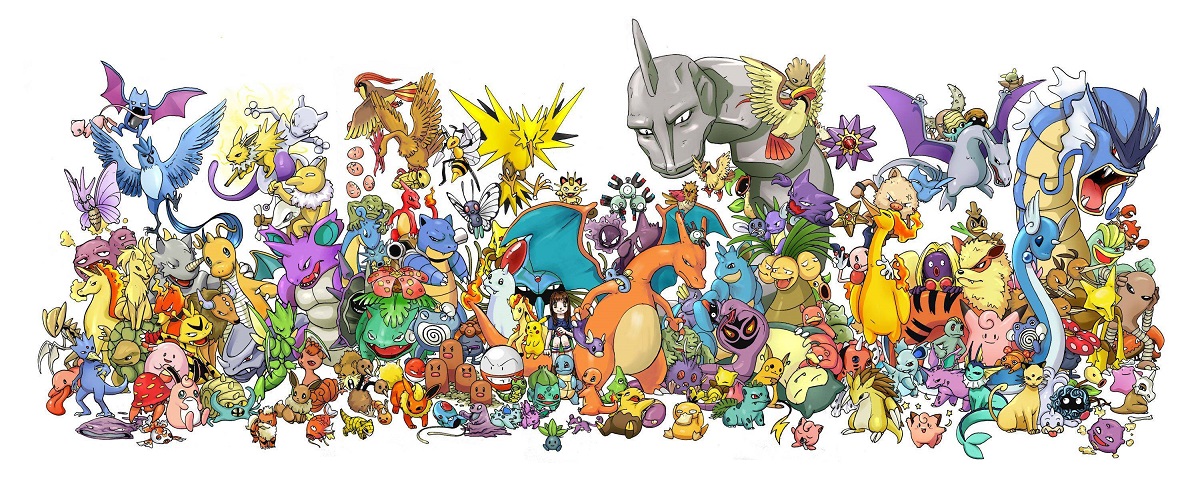I have never been a gamer and never got into Pokémon – it came out the year I turned twelve, and once my poké-balls had dropped I found myself drawn to other pursuits. Yet the fanfare surrounding the twentieth anniversary of the original Game Boy games has been hard to miss, and many of my friends and peers (OK, mostly peers) in and out of the tech community are caught up in the celebration.
And with good reason.
Pokémon is the second biggest/most successful video game franchise in history (the collective incarnations of Mario make it #1 by an exceedingly comfortable margin). As of April of 2015 there were nearly 300 million units of Pokémon video games sold, more than 800 episodes of the animated series spanning 17 seasons, successful comic book and trading card lines, and plenty of other merchandise everywhere. It’s huge, and it’s been hugely influential, and not just for hipster tech geeks – for almost all of us.
Pokémon Was Proof of Concept for the Smartphone Age
Owned by Japan’s Pokémon Company and licensed internationally by wholly-owned subsidiary Pokémon Company International (their corporate naming schema makes things like “Squirtle” and “Seel” actual seem creative), Pokémon grew in close tandem with the various generations of Nintendo’s Game Boy and its follow-up DS – it was intelligently designed to take advantage of the strengths of hand-held devices while completely ignoring their weaknesses.
Graphical depth and complexity? Gone. Complex storytelling? Unnecessary. Give people a sense of action and an always-incomplete “collection” of things, and they’ll be hooked.
In proving how viable this concept was, Pokémon presaged the age of Farmville and the like, where the point of the game is mostly to acquire – that in and of itself could be monetized, marketed, and made a focal point of entertainment. It showed game developers, and handheld computer (i.e. smartphone) developers as well, that a game’s popularity wasn’t dependent on anything groundbreaking at all, and that in fact simplicity could sell better than the most detailed and carefully crafted worlds and characters (see: Angry Birds).

Pokémon helped usher in the era of true gaming consumerism for the masses – gaming for non-gamers; gaming for parents waiting to pick up their kids from soccer practice or ballet class or devil worship; gaming for office workers looking to kill time and feel somewhat productive without doing any actual work; gaming for people who always wanted to be successful at something but didn’t want to use more than their thumbs to do it.
And let me be clear – I’m not bashing Pokémon or its fans at all. I’ve been pulled in by the weirdly addictive allure of games like Cookie Clicker and Agar.io, which have even less storyline and graphical complexity than the “Gotta catch ’em all!” genre (though Agar.io, I maintain, is a game of extreme strategy and skill, and teamers on free for all servers should get a beat-down…but that’s another article).
My point is that these games, some of which I very much enjoy, might not exist without Pokémon proving, and realistically defining the potential of the space. Developers might not have been drawn to making these games, handheld consoles and even smartphones might not have grown the way they did, and some of the tech talent currently at work on everything from productivity apps to next generation drones of death might not have gotten into the game at all.
Pokémon hasn’t endured twenty years because it revolutionized video games or gaming technology, but because its simplicity and accessibility put video games – and a lot of handheld technology – in the hands of the masses.
As of September, 2015, their animated TV show has aired in 93 different countries and regions and the total worldwide market size for all Pokémon-related products including video games, the trading card game, licensed products, and animated movies and TV shows was valued at approximately $40.8 billion USD.

